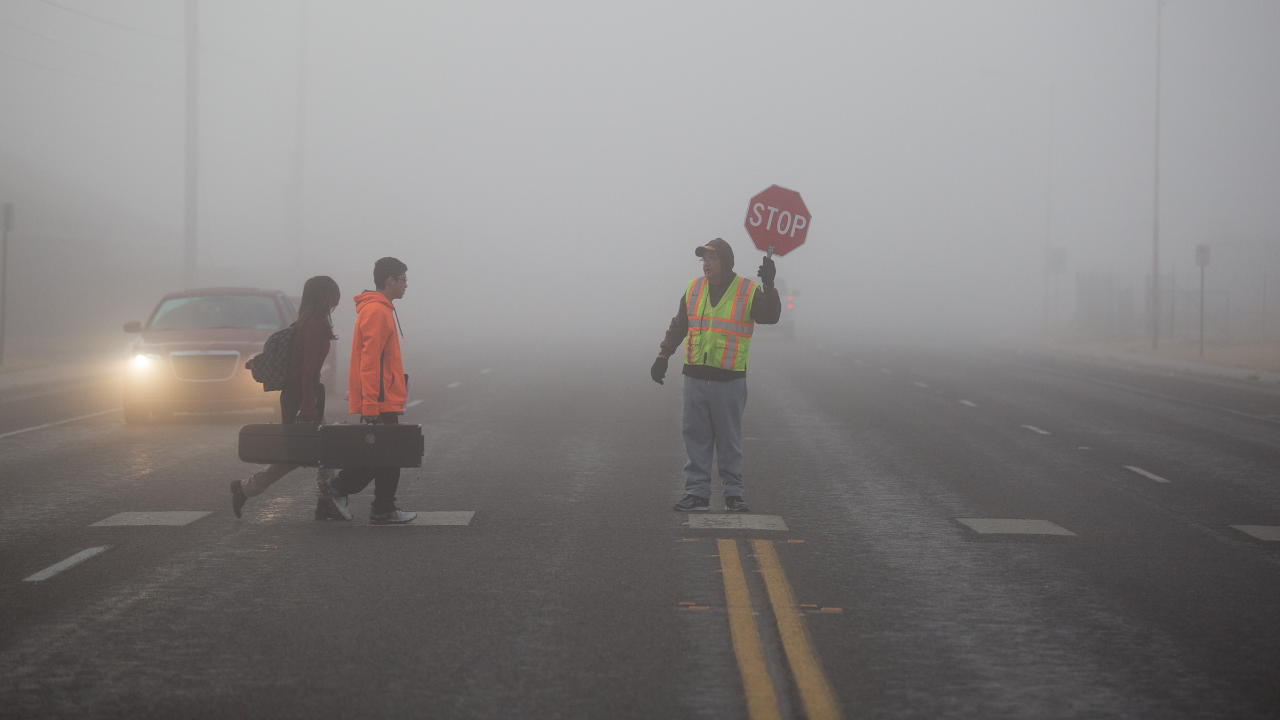
A thick blanket of fog has settled over the Midwest and northern Plains, cutting visibility to just a few car lengths and putting travel plans on pause. The National Weather Service issued dense fog advisories across seven states, warning more than a million drivers to think twice before hitting the road.
“Even short trips can become dangerous,” the agency said, urging anyone who can to wait it out until clearer skies return.
Seven States Under the Same Cloud

From Minnesota to Montana, the morning horizon vanished behind a wall of mist. The National Weather Service listed seven states—Minnesota, South Dakota, Nebraska, Wyoming, Montana, Colorado, and Alaska—under dense fog advisories through late Thursday morning.
Visibility has fallen to barely one-eighth of a mile in spots. What began as a light haze has quickly become an all-out visibility blackout, stretching from the Rocky Mountains to the upper Great Plains.
Travel Plans? “Maybe Hold Off,” Officials Say

Officials aren’t mincing words: reschedule if you can. In Wyoming and Colorado, traffic along major routes like I-25 and U.S.-83 slowed to a crawl as fog thickened overnight. Local agencies described the conditions as “life-threatening” for early commuters.
State patrols reported minor pileups where drivers overestimated what they could see. It’s shaping up to be one of the most widespread fog events this fall, and safety experts are asking drivers to err on the side of patience.
How It Happened So Fast
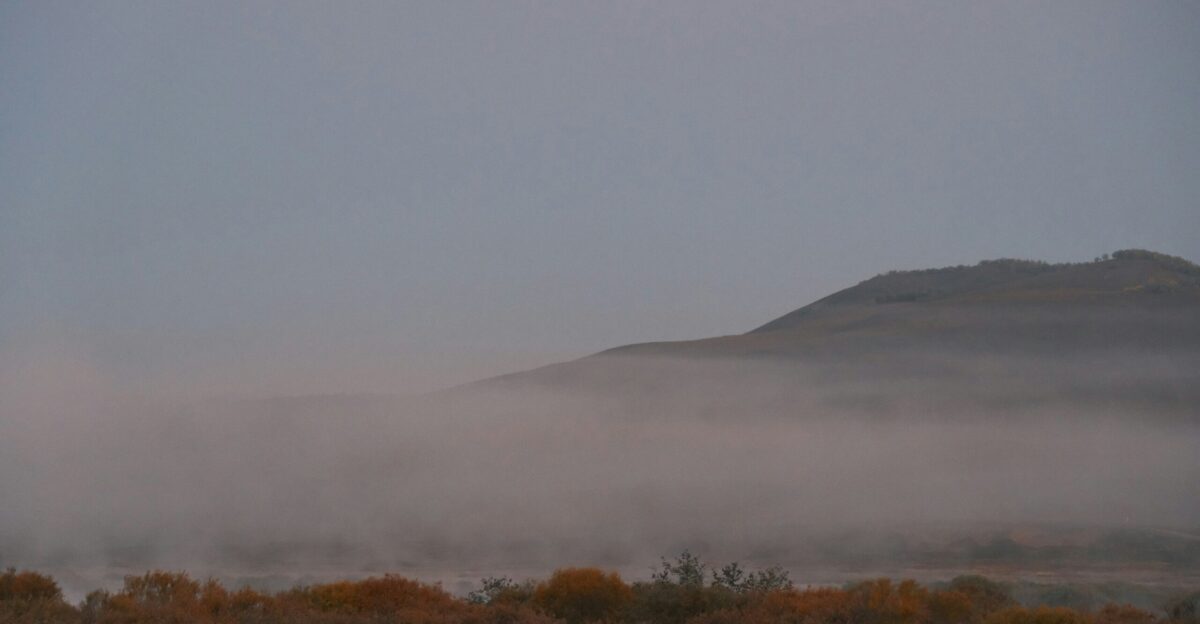
Meteorologist Kenley Bonner with the National Weather Service told Newsweek the culprit is the season itself. “When daytime warmth meets cold nights, moisture condenses near the ground—and that’s when we get these stubborn fog layers,” she explained.
This week’s calm winds worsened things, letting the fog sit low and unmoving for hours. The combination of autumn chill and trapped humidity has created a perfect, if unwelcome, storm for travelers.
Small Towns Feel the Impact
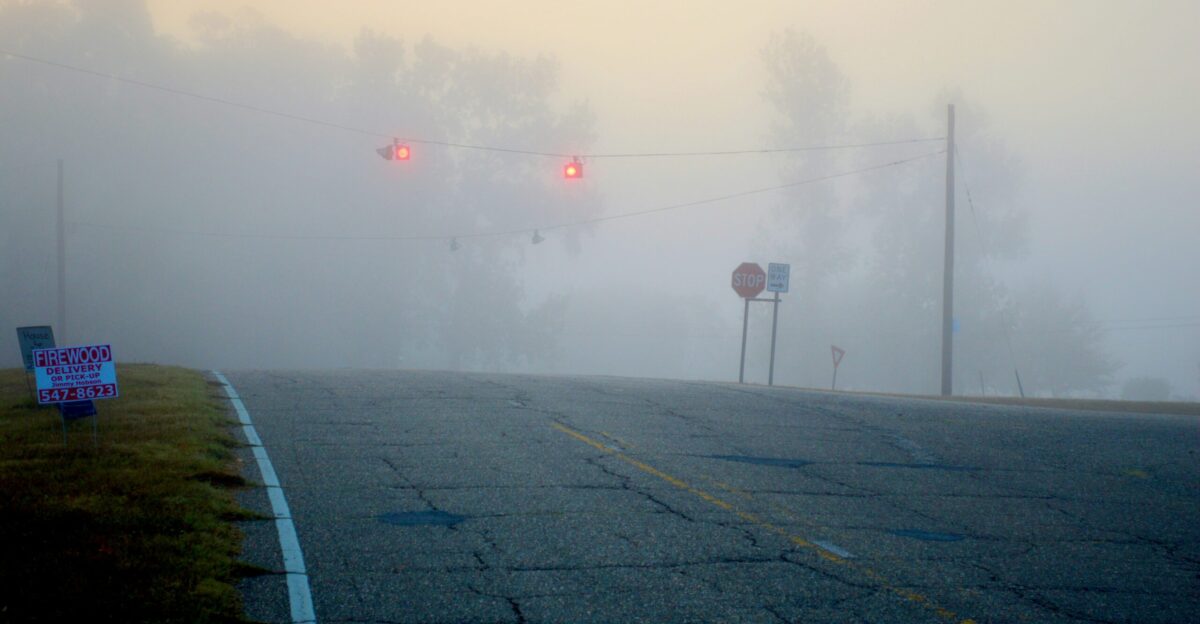
In Cheyenne, Wyoming, headlights cut through a silver wall before dawn. Drivers in North Platte, Nebraska, said they couldn’t see beyond a few feet ahead. Minnesota’s Lyon and Murray Counties reported “near-zero” visibility at sunrise, and police urged residents to delay the morning school run.
Across northern Colorado, fog was so dense that some drivers pulled over entirely, waiting for daylight to thin the haze.
Winds Whip Through the Plains
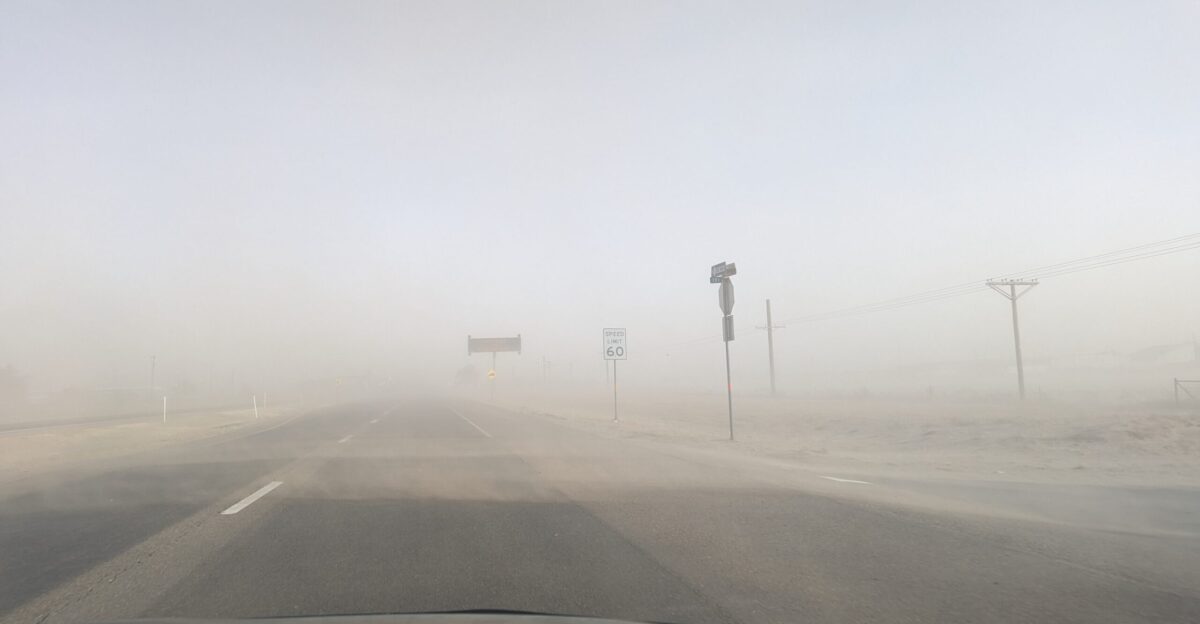
As if the fog weren’t enough, crosswinds are turning travel into a balancing act. The NWS Cheyenne office clocked gusts near 60 mph along Interstate 80, enough to knock over trailers and send semi-trucks rocking on their axles.
Highway patrols temporarily closed parts of the route, warning that high-profile vehicles face the greatest risk. “If it’s optional, don’t drive,” officers advised, saying the combination of wind and fog is especially unpredictable.
Frost Creeps Eastward

While the Plains deal with fog, the chill is spreading east. The Weather Prediction Center said temperatures in some mountain areas could plunge to 25°F, with frost warnings now reaching into Ohio, Pennsylvania, and New York. Farmers are watching closely, though most crops have already been harvested.
Meteorologists said a quick drop in overnight temperatures after a warm, humid week created ideal fog and frost conditions—an October pattern that’s both familiar and relentless.
Why Autumn Turns So Tricky
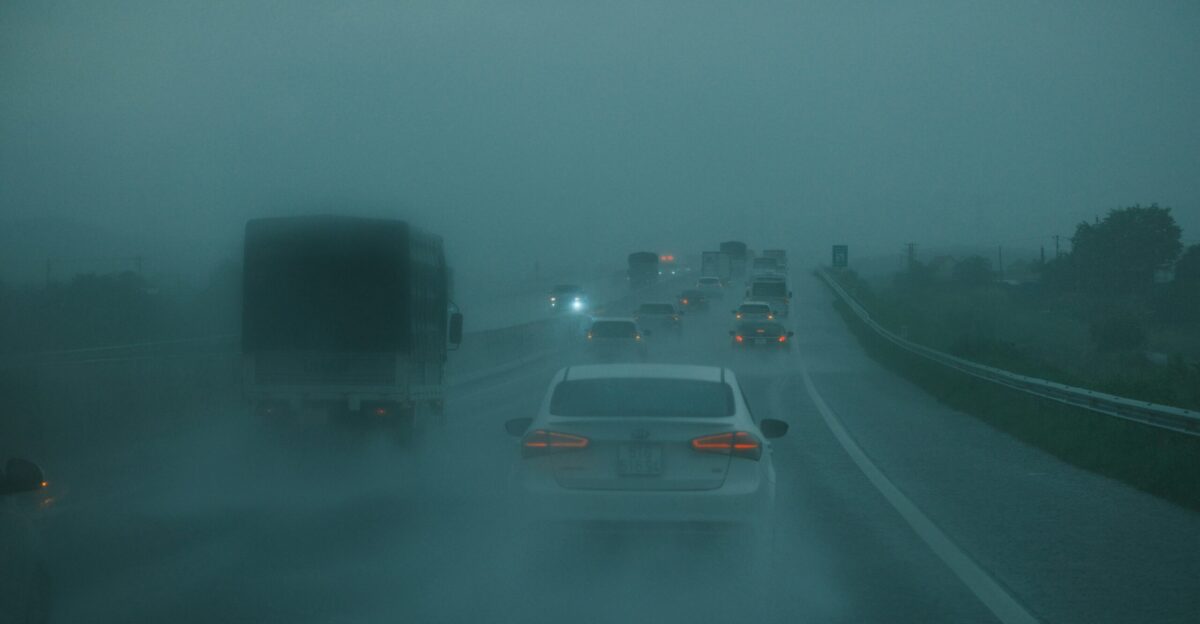
October’s weather often keeps drivers guessing. Insurance data from Aviva shows nearly one in five weather-related car claims occur this month, when warm afternoons crash into cold mornings—the result: fog, frost, black ice, and even sudden flash floods.
As the seasons collide, the road becomes a mirror of the sky, unstable and fast-changing. Safety officials say this mix of temperature swings is what makes fall travel deceptively dangerous.
NWS: “The Morning Rush Can Wait”

The National Weather Service isn’t just recommending caution—it’s practically begging commuters to stay put until midmorning. Forecasters said visibility is worst between 4 a.m. and 9 a.m., when cold air traps moisture near the ground.
The fog tends to burn off as sunlight strengthens, but valleys and river basins may stay murky into the afternoon. “If you can delay, delay,” the agency urged, calling it the surest way to avoid accidents.
Flights Delayed, Roads Closed
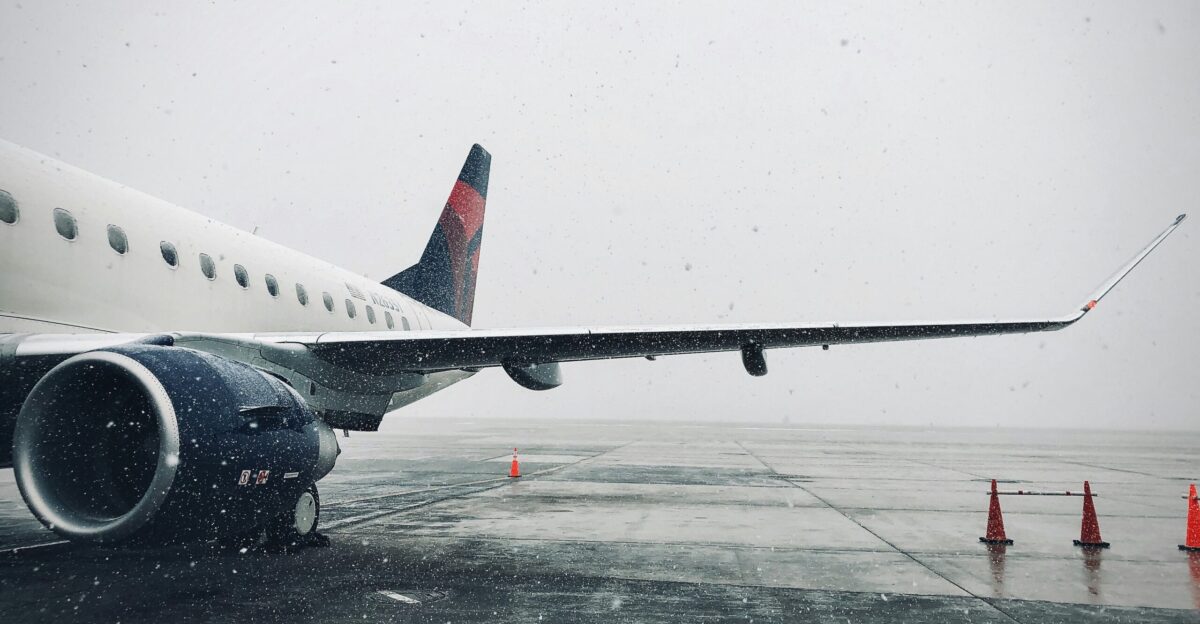
It’s not just drivers feeling the slowdown. FlightAware said more than 60 flights were delayed in Nebraska and Minnesota as thick fog grounded aircraft. On the roads, several minor collisions were reported in Colorado’s Weld and Logan Counties.
Authorities closed sections of Highway 34 and I-76 while clearing vehicles and debris. No major injuries were reported, but troopers say the danger persists as long as drivers can’t see the car in front of them.
Fog Triggers Chain Reaction of Alerts

This single fog system has set off warnings across over a dozen states. Meteorologists at the Climate Prediction Center said the shift toward La Niña conditions may be making these weather swings sharper.
Cooler air masses are dropping farther south earlier in the season, leading to fast transitions—sunshine one day, freezing fog the next. The advice is to expect instability to stick around for the rest of October.
Crews Working Round the Clock
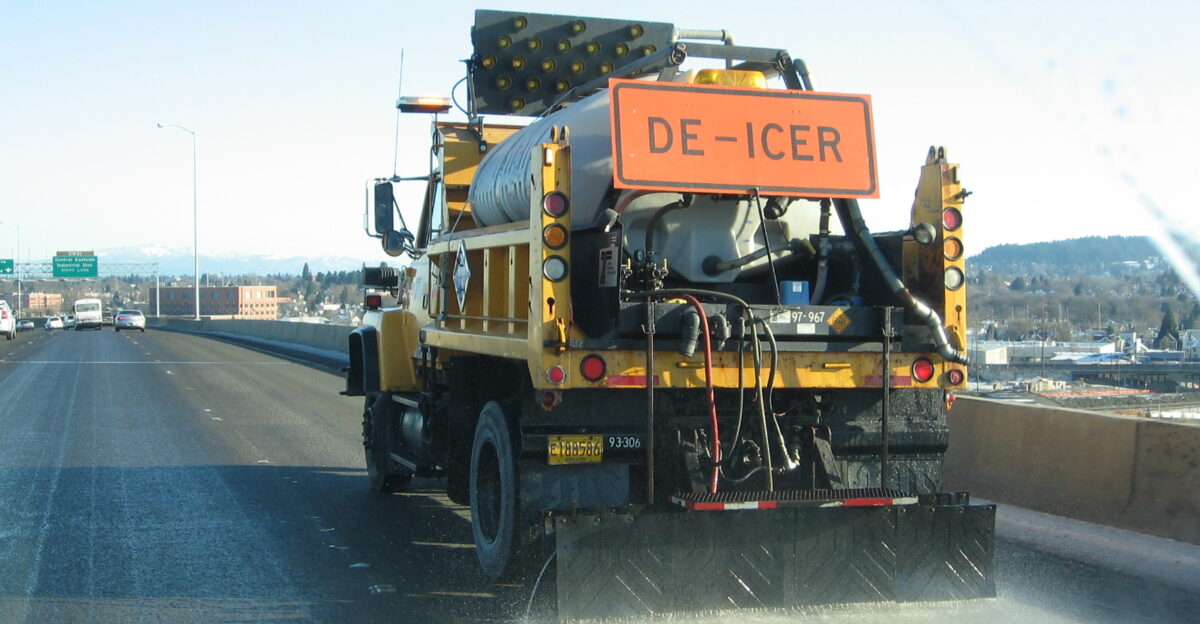
Transportation departments across the region have gone into storm mode. De-icing and sand trucks are out in Wyoming and Nebraska, clearing moisture and improving traction. Patrols are running rolling closures on highways when visibility dips below safe levels.
“It’s a team effort,” officials said, adding that drivers who stay home are helping too. With more fog expected overnight, crews are preparing for another long shift on the roads.
Staying Safe in the Mist
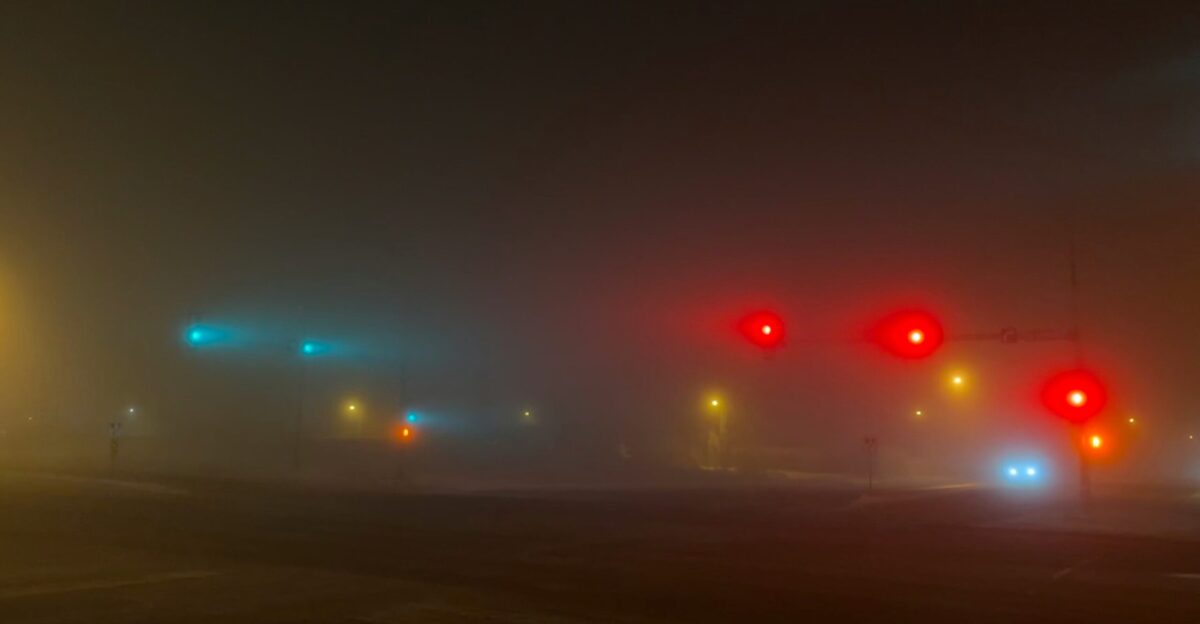
If you absolutely must drive, experts say to keep headlights low, speed down, and distance wide. The NWS recommends tripling your following distance and pulling over completely if the fog feels blinding. “
When you can’t see the lane lines, it’s time to stop,” an NWS bulletin read. Drivers are also urged to resist high beams—those only reflect the moisture, turning fog into a glowing white wall.
A Week of Wild Weather
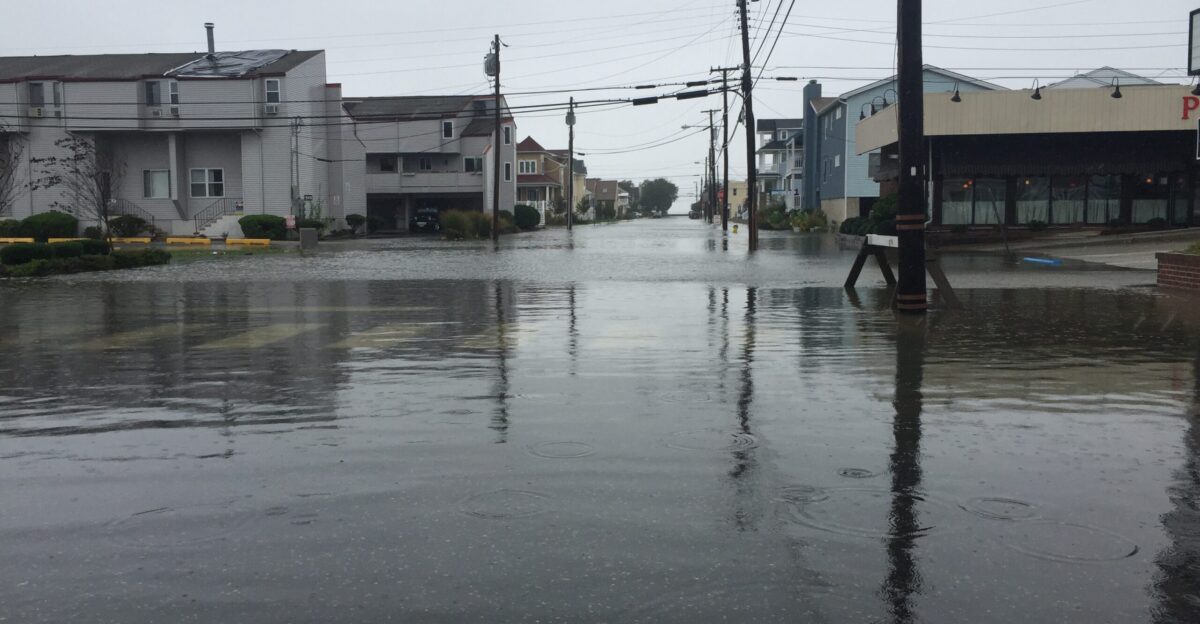
The Midwest’s fog comes on the heels of another rough week nationwide. Coastal New Jersey saw flooding after wind gusts hit 50 mph, while parts of the Pacific Northwest faced heavy rains tied to an early-season atmospheric river.
The Mount Holly NWS office said power lines came down in at least three counties. Meteorologists point to an unsettled jet stream, a hallmark of La Niña’s early arrival this fall.
Clearer Skies Ahead—But Stay Cautious

Forecasters say relief is in sight. A cold, dry front sweeping in from Canada should clear much of the fog by Saturday. Still, early-morning frost and slick roads will linger.
The National Weather Service continues to advise drivers to “reschedule nonessential travel” until visibility fully returns. Patience, they remind, can save lives. As the Midwest exhales from a foggy week, one thing is certain—autumn’s mood swings aren’t over yet.